If you have a passion for airplanes or helicopters and enjoy a challenge, consider becoming a Commercial Pilot. This is a very rewarding career where you can see the world from a vantage point that not many others get to experience. Becoming a pilot requires self-confidence, a keen mind, problem solving, a well-developed sense of responsibility and a desire to continue learning.
Pilots are responsible for operating fixed-wing or rotary aircraft safely and in accordance with current rules and regulations and also for ensuring the safety of every individual on board. There are many different kinds of pilots but they all have the same basic goals: to complete the job safely, be as economical as possible and to depart and arrive on time. Some of the different types of pilots include:
- Airline Pilot: A two-crew (or more) environment; regional, national and international flying; short or very long distances; small to very large aircraft
- Charter Pilot: A one or two-crew environment, flying medium-sized planes and either carrying people or hauling cargo
- Helicopter Pilot: A one or two-crew environment, often doing survey or medevac work
- Bush Pilot: A one or two-crew environment, flying small planes on wheels or floats and either carrying people or hauling cargo
- Air Ambulance Pilot: A one or two-crew environment; fixed or rotary wing; often flying in challenging situations and locales
- Air Taxi Pilot: A one or two-crew environment, flying medium-sized planes and carrying people
- Corporate Pilot: A one or two-crew environment, flying medium-sized planes and carrying people
- Instructor: A single pilot environment, teaching students on either a fixed-wing or rotary-wing aircraft
- Military Pilot: A one or two-crew environment, aircraft of all sizes; many functions: combat, transport, surveillance, medevac, etc.
- Test Pilot: A one or two-crew environment, aircraft of all sizes that are in the under development and in the final stages of prototyping
Pilots must have a thorough understanding of weather patterns and phenomena. There are certain types of weather that aircraft cannot fly through; because of these situations, the pilot must be able to read and understand weather information and make “Go/No-Go” decisions. An incorrect decision can be fatal. For this reason, pilots undergo copious amounts of weather training and are required to evaluate weather conditions before every flight.
Whether flying a fixed-wing or a rotary-wing aircraft, the pilot must be familiar with a specific aircraft’s performance. This means knowing and understanding how each system on the aircraft works and if a system goes offline, how that will affect the safe continuation of the flight. Some of the systems the pilot must understand are: pitot-static system, electrical system, vacuum system, hydraulic and pneumatic systems and the autopilot. Pilots must be competent to do pre-flight inspections of each system. Some of these systems incorporate cutting-edge technology and are continuously being upgraded; pilots must be able to adapt and learn quickly in order to remain current on the aircraft type.
Every airplane and helicopter has been evaluated to determine how much weight it is able to carry. Pilots are responsible for ensuring that their aircraft has been loaded properly, that all baggage or cargo is secure and that the aircraft is not overweight. An overweight aircraft is very dangerous because it will not respond to input nor perform as the pilot expects. In addition, fuel calculations factor in weight as well as distance, speed and weather conditions.
The training to become a pilot is very strict and challenging. Individuals must complete numerous written tests that cover a vast range of topics including: navigation, weather, air law, airmanship, instruments, operations, and others. The practical exams are inflight tests with a qualified examiner in which the pilot must demonstrate their ability to perform specified maneuvers safely and within tolerances. Both of these types of examination require the pilot to complete a certain number of flying hours before they qualify for these exams. Once a pilot completes all basic training and begins their career, they are required to complete a proficiency test every six months to ensure they are still competent and capable of flying their aircraft. To ensure the physical fitness of operational pilots, annual medical testing is mandatory for pilots under the age of 40, and every 6 months for those over 40.
CAREER PATHWAY
- Involvement in Air Cadets or flight clubs (an asset)
- Completion of Secondary School (required)
- Completion of a post-secondary program (an asset)
- Completion of Private Pilot’s licence, Commercial Pilot’s licence, night rating, multi-engine rating, instrument rating, Airline Transportation Pilot’s licence (required)
- Knowledge of Transport Canada’s Canadian Aviation Regulations (required)
- Acquisition of flight hours appropriate to the desired position (required)
OTHER REQUIREMENTS
- Sound knowledge of aircraft systems, aerodynamics, aircraft structures and weather patterns and phenomena
- Strong communication skills in the English language
- Ability to exercise good judgement in stressful situations
- Ability to work well with crew members
- Ability to understand new concepts quickly
EMPLOYMENT OPPORTUNITIES
- Airline Captain or First Officer
- Bush Pilot
- Charter Pilot
- Medevac Pilot
- Search and Rescue Pilot
- Canadian Forces Pilot
- Dispatch/Air Traffic Control
- Flight Instructor
JOB TITLES
- Chief pilot
- Flight Engineer
- Captain
- First Officer
- Co-Pilot
- Pilot
- Chief Flying Instructor
